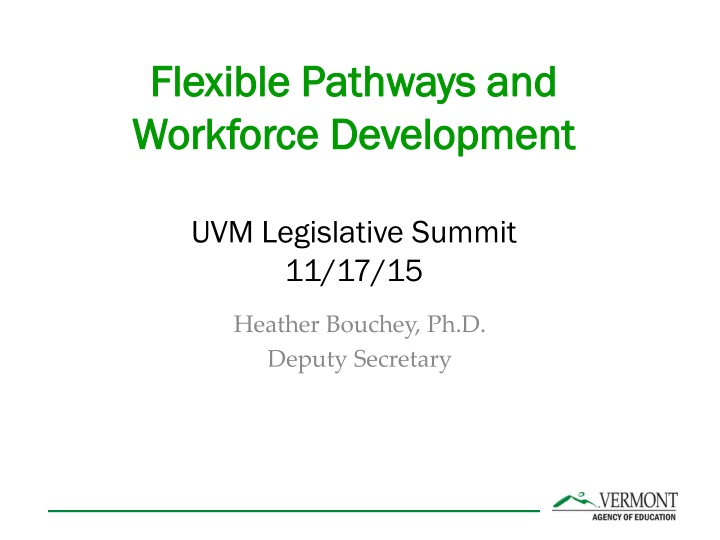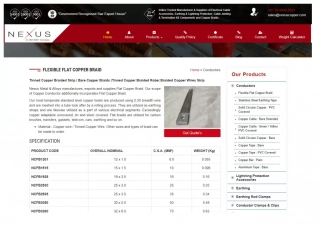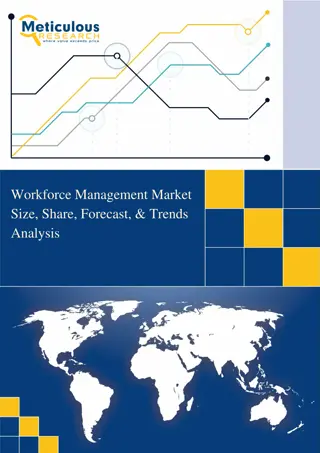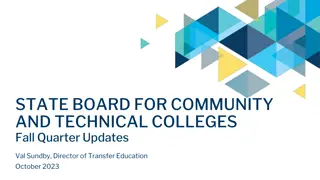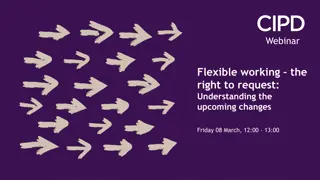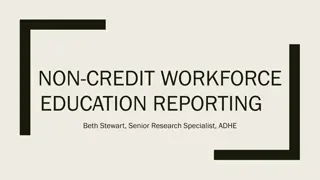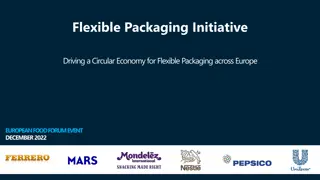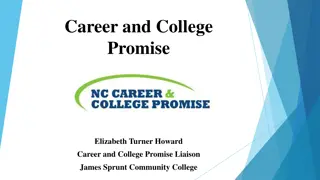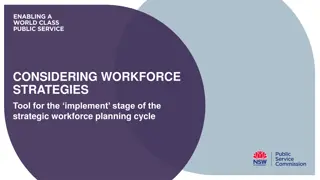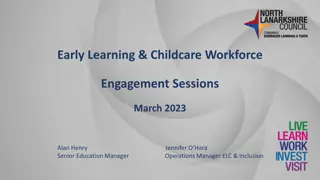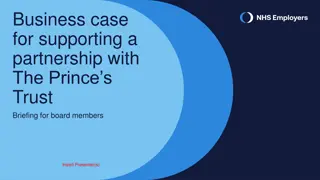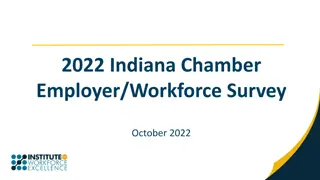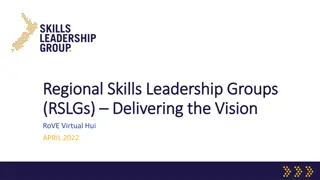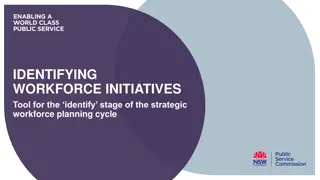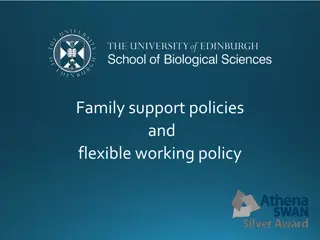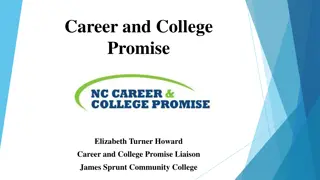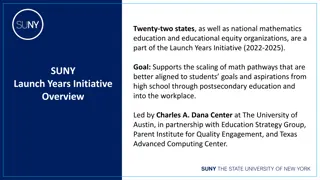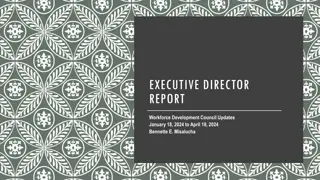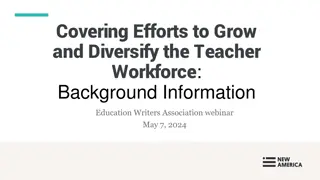Flexible Pathways and Workforce Development Overview
Governor Peter Shumlin signed the Flexible Pathways bill (Act 77) in 2013, expanding dual enrollment, early college programs, work-based learning, and more. Promising partnerships like the Fast Forward dual enrollment program and needed directions for creating state-level systems are highlighted.
Download Presentation

Please find below an Image/Link to download the presentation.
The content on the website is provided AS IS for your information and personal use only. It may not be sold, licensed, or shared on other websites without obtaining consent from the author.If you encounter any issues during the download, it is possible that the publisher has removed the file from their server.
You are allowed to download the files provided on this website for personal or commercial use, subject to the condition that they are used lawfully. All files are the property of their respective owners.
The content on the website is provided AS IS for your information and personal use only. It may not be sold, licensed, or shared on other websites without obtaining consent from the author.
E N D
Presentation Transcript
Flexible Pathways and Flexible Pathways and Workforce Development Workforce Development UVM Legislative Summit 11/17/15 Heather Bouchey, Ph.D. Deputy Secretary
Flexible Pathways On June 6, 2013 Governor Peter Shumlin signed the Flexible Pathways bill (Act77) which provides for: Expansion of the existing Statewide Dual Enrollment Program Expansion of Early College Programs Increased access to work-based learning Increased virtual/blended learning opportunities Increased access to Career and Technical Education (CTE) Implementation of Personalized Learning Plans (PLPs)
Flexible Pathways On June 6, 2013 Governor Peter Shumlin signed the Flexible Pathways bill (Act77) which provides for: Expansion of the existing Statewide Dual Enrollment Program Expansion of Early College Programs Increased access to work-based learning Increased virtual/blended learning opportunities Increased access to Career and Technical Education (CTE) Implementation of Personalized Learning Plans (PLPs)
Dual Enrollment Before and After Act 77: Flexible Pathways FY 13 (Prior to Act 77 Implementation) FY 14 (First Year of Implementation) Total Participants 612 1292 (203 excluding summer) subpopulations Male Female Free/Reduced Lunch Special Education English Language Learners (data excludes summer) 62 141 53 1 7 448 844 353 43 86 Source: http://legislature.vermont.gov/assets/Legislative-Reports/ACT-77-Annual-Report-FY14-1-30- 15.pdf
Promising Partnerships Fast Forward dual enrollment program CTE students are entitled to two dual enrollment vouchers [in addition to the Act 77 vouchers] to use at CCV or VTC. GW Plastics and VTC scholarships and paid internships in mechanical engineering; using VAST (early college credits) local student can finish his or her associate degree by the age of 19, have an excellent job, and a nearly-free college degree Health Science/Sports Medicine program at the Burlington Technical Center ; students graduate high school with at least 12 college credits. CTE Director s Association and AOE partnership meet this year with at least 12 groups of teachers to discuss programs of study and help connect them to CCV and VTC for dual enrollment opportunities.
Needed directions Creating state or regional level systems that require or provide incentives to coordinate available resources and programming e.g., the career pathways model.
VT CEDS Priority Sectors Travel/Tourism and Business Systems (Culinary, Hospitality, Accounting, Management, Entrepreneurship) Manufacturing/Engineering (STEM) Construction/Green Building and Design Agriculture, Local Food Systems, & Natural Resources Health/Medical Information Technology (Networking, Software Development, Website Design)
Curricular Indicators CTE Enrollment Career Clusters Offered Accreditation Received Vermont 9,461 6 (modified) 72.3% New Hampshire 21,057 15 96% Maine 17,103 16 (modified) 55.5% Massachusetts 118,152 10 (modified) 55.4% Rhode Island 20,733 16 38.9%
Current access and funding for CTE = often not until junior and senior years; limits scope and depth of programming and associated ROI Earlier exposure to build student capacity in concepts and learning models that will come later in the CTE pipeline Personalized Learning Plans to link this exposure with high school and post-high school experiences and goals
NECAP Reading Scores: Interaction of Poverty and Gender NECAP Grade 7 Reading Results by Gender and Family Income ALL All Assessed Students 60 MNFRL Male Not Free/Reduced 55 Score Points FNFRL Female Not Free/Reduced Lunch 50 45 MFRL Male Free/Reduced Lunch 40 FFRL Female Free/Reduced Lunch 35 30 2007 2008 2009 2010 2011 2012 Test Year
High School Completion Gender Differential 25 20 15 2009-2010 2013-2014 10 5 0 0-2% 3-5% 6-10% 11-15% 15-19% 20%
CTE and Gender In FY 2013, 4,872 secondary and 4,153 postsecondary students participated in CTE. At the secondary level, 39% were female and 61% were male. At the postsecondary level, 62% were female and 38% were male.
Take Home Points Leveraging power of DE, CTE, and cross- organization partnerships Introducing CTE earlier into the k-12 curriculum, PLPs Equity and demographic concerns
